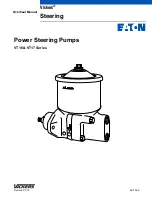
Basic Programming
Output
control
where <value> can be programmed between the output setting value (Vset or Iset) and the
output rating (Vmax or Imax) + 10%.
When changing the settings of an output while using a manual setting
mode for the protection thresholds, follow the guidelines shown here:
For up programming, raise the protection thresholds before you raise the
output settings.
For down programming, set the new output settings before you lower the
protection thresholds.
Output settings
Setting the desired output’s voltage and current (Vset and Iset) is done using the
following commands:
VSET <ch>,<value>
and
ISET <ch>,<value>
where <value> is limited by the lower of Vlim or OVset for voltage and Ilim or OCset for
current. Iset has a lower limiting value on its programming – Imin.
Output control
Once set up, a Power Module needs to be turned on to enable it to provide power at its
output.
A Power Module will provide power at its output when all the following conditions are
true:
The Primary (main converter) is turned on (not shutdown using the external
hardware control feature or due to a fault).
The XMP 2600 outputs are globally enabled (using the OUT 1 command).
The Power Module is not shutdown due to a fault or the selective shutdown
mechanism.
The Power Module is turned on (using the OUT <ch>,1 command).
The output disconnect relay of the Power Module is closed (default state or
use the DISC <ch>,0 command.
The following sections describe the commands available to you for controlling the
outputs of the Power Modules.
Output
activation
Activating the output of a Power Module (turning it on) is done in two levels. Please note
that at turn on, the outputs are disabled both individually and globally.
Globally enabling the outputs
Use the OUT 1 command to globally enable the outputs of all the Power Modules.
Note that only Power Modules that are individually turned on will actually have their
outputs turned on when this command is issued.
XMP 2600 Programming Manual
rev. 1.1
19
















































